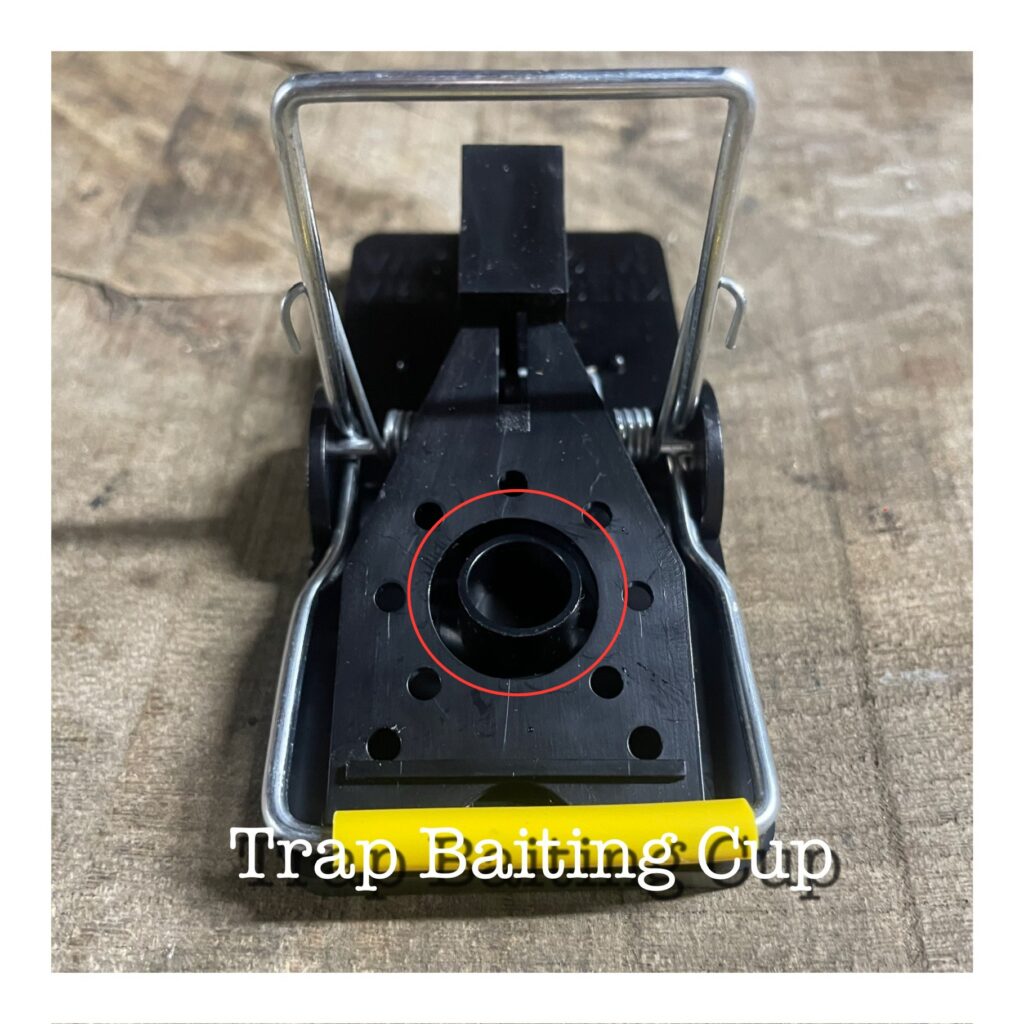2023 was the Year of the Rat in the eastern counties, with more rat call outs than usual. If you’ve ever tried to deal with a rat lodger yourself, it’s very likely that you used a Snap-E trap. These cheap and chunky traps are widely available and promise to do the job in one quick snap. But first you have to persuade the rat to do its part, and that’s often where the ‘Do it yourself’ approach fails. We get called in if the rat won’t go near the trap, so we’ve heard a few bait stories over the years.
A lot of people use a chunk of cheese as their bait, but in real life rats and mice are not that fond of cheese. Even when they are tempted to try a little Cheddar, rats are deft and intelligent. They are capable of removing a solid chunk of cheese without springing the trap, and then you’ve just treated a rat to meal.

A good trap will include a bait cup. These are designed to be filled with the best kind of bait – something spreadable like peanut butter, Biscoff spread or Nutella. Mice love chocolate, so if you can bear to buy chocolate to feed to a rodent you can give that a try. Rats can’t pick up spreads and sticky chocolates as easily as they can pick up a chunk of cheese. They have to lick the spread out by sticking their noses into the cup, and that should set the trap off.
An even better bait is the food they’ve chosen themselves. They prefer seeds, cereals and nuts, so check any bags of nuts or seeds and the boxes of breakfast cereal in your food stores for nibbled corners and torn packages. When you find what they’re enjoying, remove it from your pantry so that they don’t have that easy feeding station. Use the food from the damaged pack to bait traps (you really don’t want to eat food that a rat or mouse has taken bites from) and try baiting a different trap with peanut butter in a bait cup to see which one catches the thief.

Rats are neophobic, meaning that they’re wary of new things. They will see your traps as ‘Unknown thing, might be dangerous’. You have to admit, they have a point there. You may get better results by following a few simple steps;
- Leave the trap in place for a few days to let them get used to its presence. Don’t add bait and don’t set it.
- Next, put some bait on the ground immediately next to the trap to lure them in. Don’t set the trap. You don’t want to scare them at this stage.
- When you see that some of the bait has been eaten, put more bait into the bait cups (you might also try spreading bait on the treadle). Again, don’t set up the trap mechanism.
- When you see they are taking the bait – put more bait into the cup and set the trap. And hopefully – Snap!
- Make sure to place the trap in areas you know rats have been active, look for droppings or smear marks.
With luck and a little patience, you should catch the rat. Keep leaving the traps out to catch any of its ratty friends and family that might be waiting out the winter in your lovely warm home. And if all else fails – well, you know our number. Happy to help.

